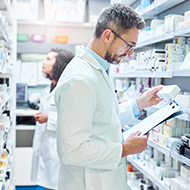Device could ‘capture’ exhaled anaesthetic from surgeries
21 per cent of the carbon emissions from an orthopaedic procedure is volatile anaesthetics.
A research project from the University of Nottingham has explored how a volatile gas capture device could reduce the impact of anaesthetic gases on the environment.
Scientists estimate that 21 per cent of carbon emissions from a canine orthopaedic procedure is the result of volatile anaesthetics.
The study sought to investigate the efficiency of a volatile gas capture device in collecting gases from anaesthetised dogs and cats. The technology could be used in future to capture the gases, and then reprocess and reuse them as anaesthetic drugs.
It is hoped this could lead to a move from a linear (take-make-waste) economy to a circular (reuse-repair-recycle) economy.
Researchers were able to demonstrate a 65 per cent capture of isoflurane. It prevented an average release of 3.75kgCO2e for each 20-minute period of the study – the equivalent of 14 miles driven in a car.
However, they did identify that the device’s capture was dependent on multiple factors, including the patient’s blood pressure.
Kate White, who led the study, said: “Reducing the carbon footprint associated with anaesthesia and surgery, in humans or animals, is an important issue, and one way we can do this is to capture the waste gases to prevent environmental damage.
“My team have been evaluating the capture of isoflurane, sevoflurane and desflurane using SageTech's technology in dogs, cats, horses, ruminants and even zoo animals and teaching the veterinary students at the University of Nottingham about the concept.
“The technology in combination with interventions such as reducing single use items and low flow anaesthesia offers significant potential as we transition to a low carbon world.”
The study has been published in the British Journal of Anaesthesia.
Image © Shutterstock



 The VMD has announced dates for its next Veterinary Dispensary Manager Online Course.
The VMD has announced dates for its next Veterinary Dispensary Manager Online Course.